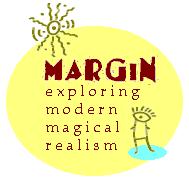

s p o t l i g h t
I, TITUBA, BLACK WITCH OF SALEM

AUTHOR
Maryse Condé (Pointe-à-Pitre, Guadeloupe, 1937- )AWARDS
(France) Grand Prix Litéraire de la FemmeRELEASED
1986 (as Moi, Tituba, Sorcière...Noire de Salem)
1992 in English translation (by Richard Philcox)SUMMARY
From the back cover: "From the warm shores of seventeenth-century Barbados to the harsh realities of the slave trade, and the cold customs of Puritanical New England. Tituba, the only black victim of the Salem witch trials, recalls a life of extraordinary experiences and mystical powers. ... At the age of seven, Tituba watched as her mother was hanged for daring to wound a plantation owner who tried to rape her. Tituba was raised from then on by Mama Yaya, a gifted woman who shared with her the secrets of healing and magic. But it was Tituba's blind, all-consuming love of the slave John Indian that led her from safety into slavery, and the bitter, vengeful religion practiced by the good citizens of Salem, Massachusetts. Though protected by the spirits, Tituba could not escape the lies and accusations of that hysterical time.From earl e. fitz/inter-american literature and criticism: an electronic annotated bibliography: "This novel by the Guadalupean writer Maryse Condé offers a fictionalized version of an essentially true story: that of the West Indian slave Tituba, who, having been sold away from her Caribbean homeland, ends up accused of witchcraft in the Salem, Massachusetts, trials of 1692. Richly ironic in a postmodern mode, the novel allows Tituba to gain a voice, a history and a presence she does not have in Arthur Miller’s play The Crucible, in which a slavewoman named Tituba also appears. At one point, for example, Tituba, an imaginatively enhanced historical character, meets and discusses feminist issues with Hester Prynne, of Hawthorne’s The Scarlet Letter. In a general sense, the novel also illustrates why the Caribbean can be understood as the 'crossroads of the Americas,' a culturally mixed region where the histories of the several Americas have long intertwined."
AUTHOR LINKS
From the Howard University Library System: MARYSE CONDÉ: Novelist, Playwright, Critic, Teacher. An Introductory Bio-bibliographyRAVES
"Condé is able to blend the fictional with the factual and imbue island scenes with remarkable lushness and enchantment...Just as Tituba's voice should never have been silenced, Condé is too important a discovery for American audiences to ignore." —Chicago Tribune"Maryse Condé is a sorcerer of prose, and in this richly imagined novel, our past and present meet like the earth and sky of the horizon." —Henry Louis Gates, Jr., Harvard University
"Condé restores a vital link in the spiritual and cultural chain that connects Caribbean and American descendants with their African ancestors, and helps create for them an alternative to the colonial and post-colonial traditions from which they have been excluded." —Boston Sunday Globe
BOOK REVIEWS
I, Tituba, Black Witch of Salem: Davis Richard Book ReviewINTERVIEWS
Crossover Texts/Creole Tongues: A Conversation with Maryse Condé, by Emily ApterIS IT MAGICAL REALISM?
MARGIN note: It's likely that Maryse Condé might not agree with the characterization of I, Tituba, Black Witch of Salem as a work of magical realism. Or it could be that she doesn't think of magical realism as a powerful form? Condé once made a controversial remark about Toni Morrison's work: "This may appear a bit critical, but I find her very 'politically correct.' In my opinion, she doesn't disturb anybody. She paints her community, the African-American community, with the tested colors of magical realism."
You might be asking yourself:
"But when witchcraft is the leading subject in a story and intrinsicJoin us in determining how organic the supernatural is, or isn't, to the magical realist purpose, in our column, Subject-2-Interpretation
to the plot and narrative, doesn't that make the story supernatural
rather than magical realist?"

margin home | contents | links | reading list | marginalia | contributors | staff | guidelines | kudos | subscriptions | contact us
Layout, design & revisions
© Tamara Kaye
Sellman, Webmaster
Active home URL:
http://www.magical-realism.com
(also:
https://www.angelfire.com/wa2/margin/index.
html)
TERMS OF USE: This site contains copyrighted materials, including but not limited to text and graphics. You may not use, copy, publish, upload, download, post to a bulletin board, include in any weblog or otherwise transmit, distribute or modify any elements of this site in any way, except that you may download one copy of such contents on any single computer for your own personal, non-commercial use, provided you do not alter or remove any copyright, author attribution or other proprietary notices.